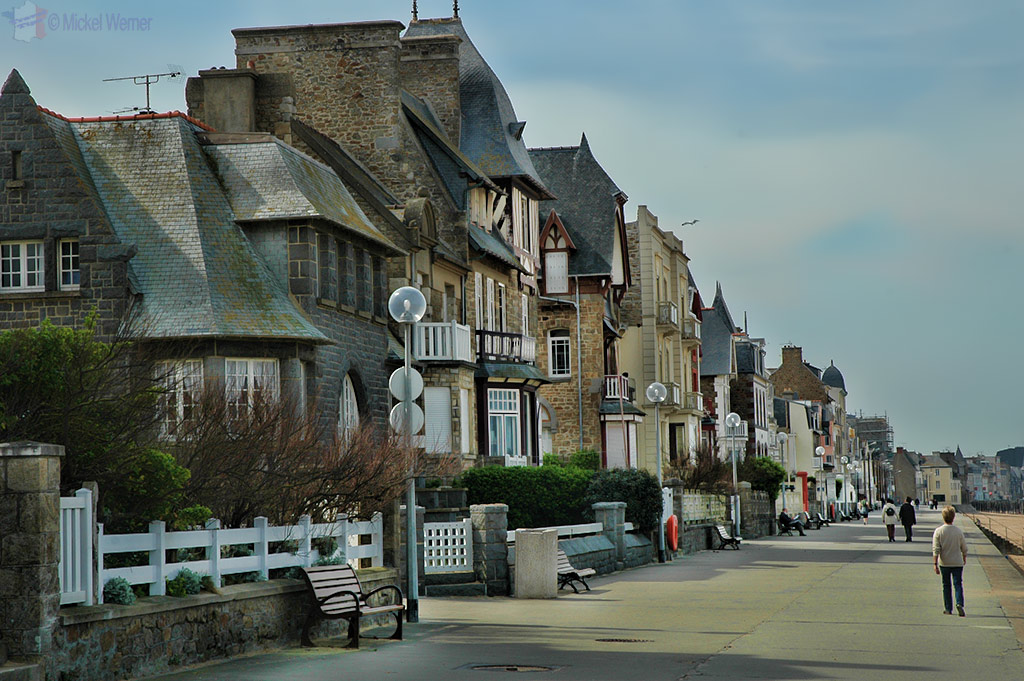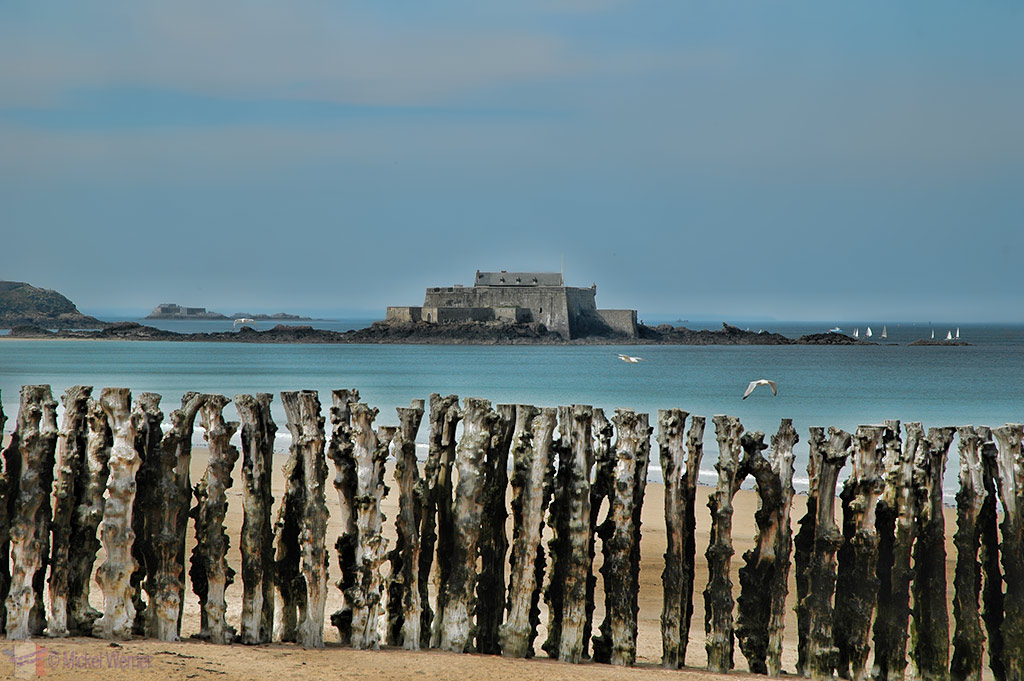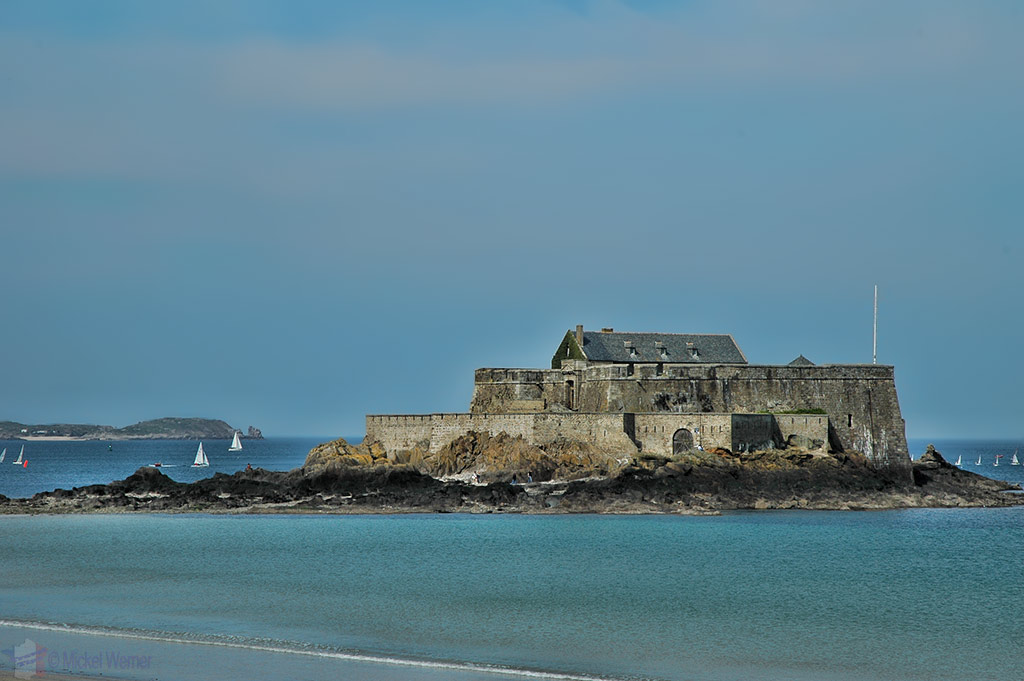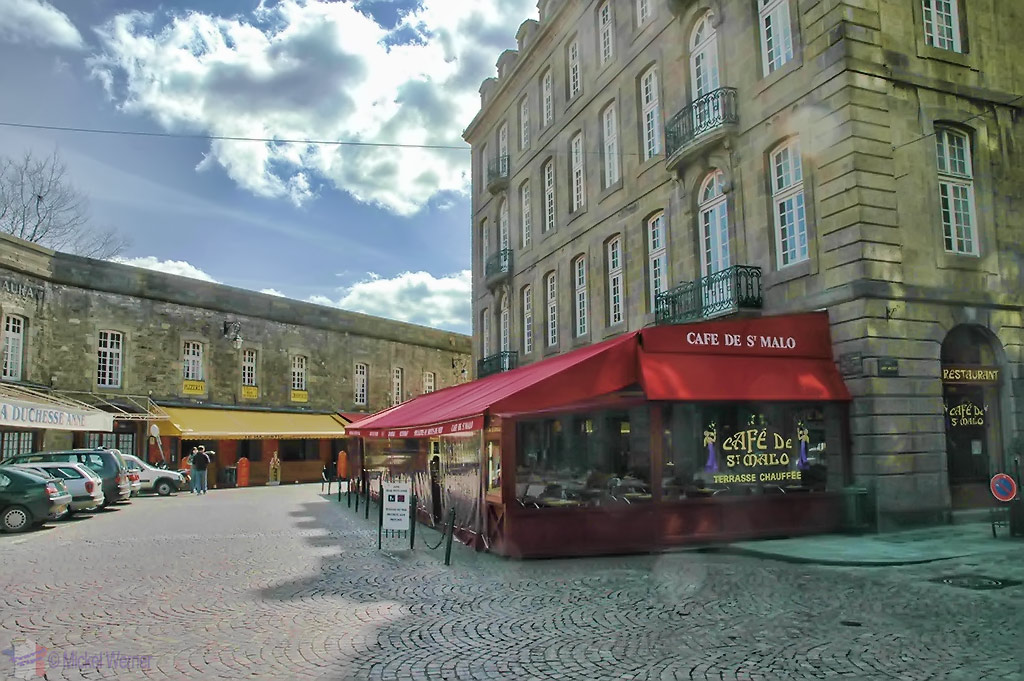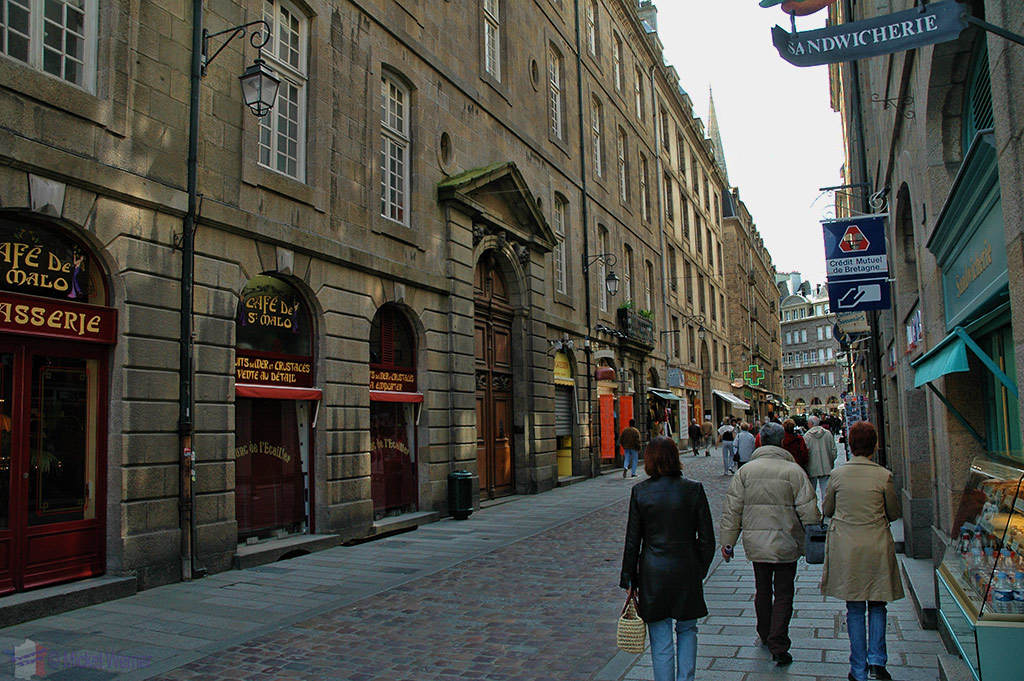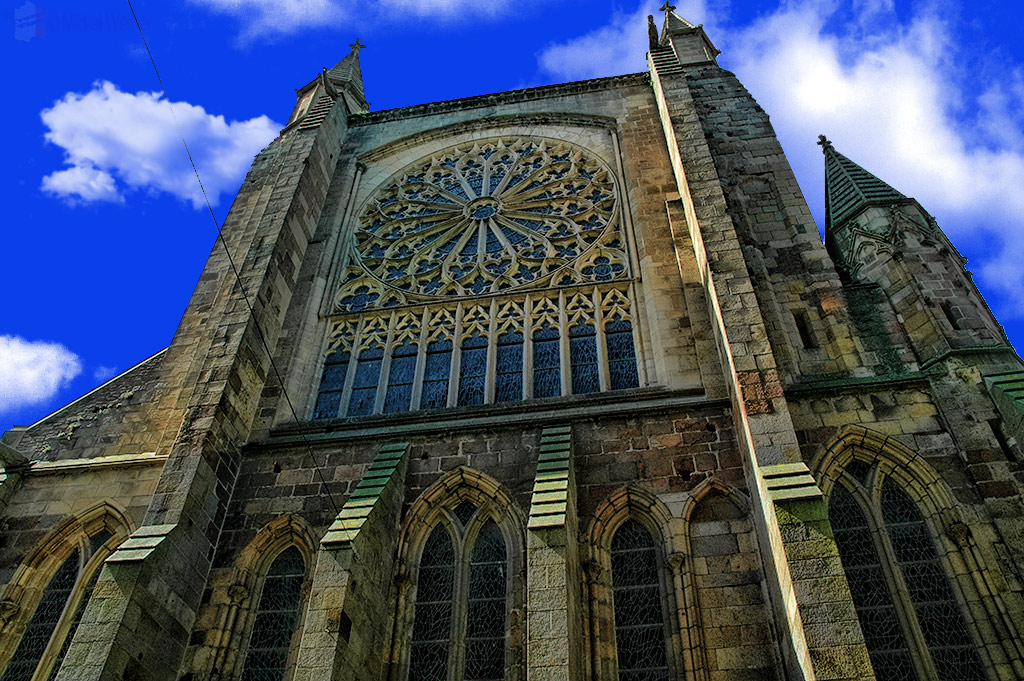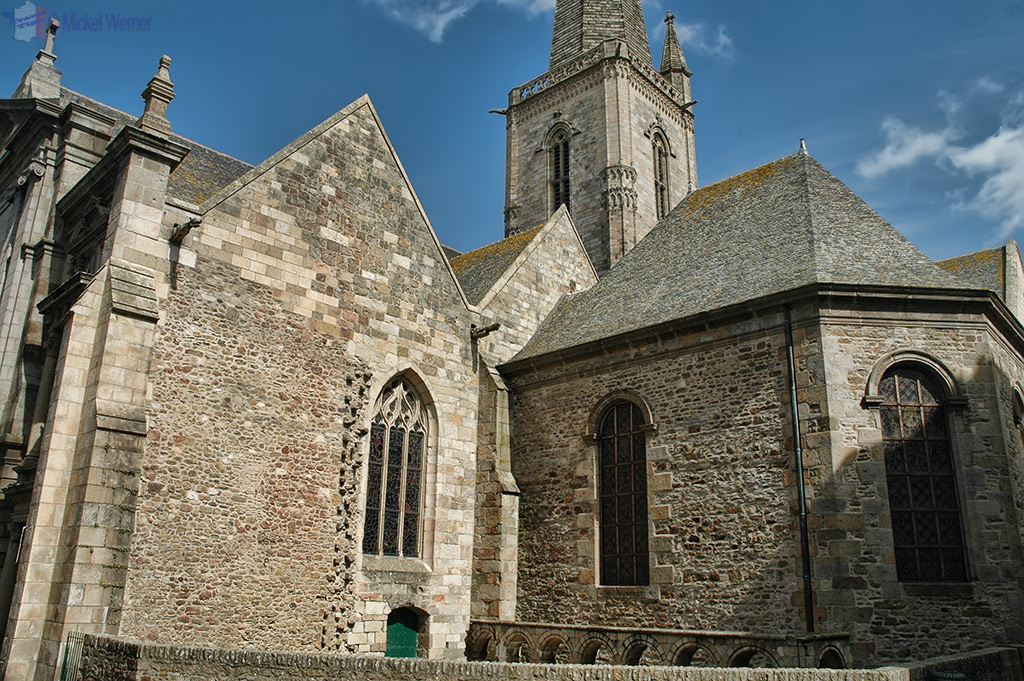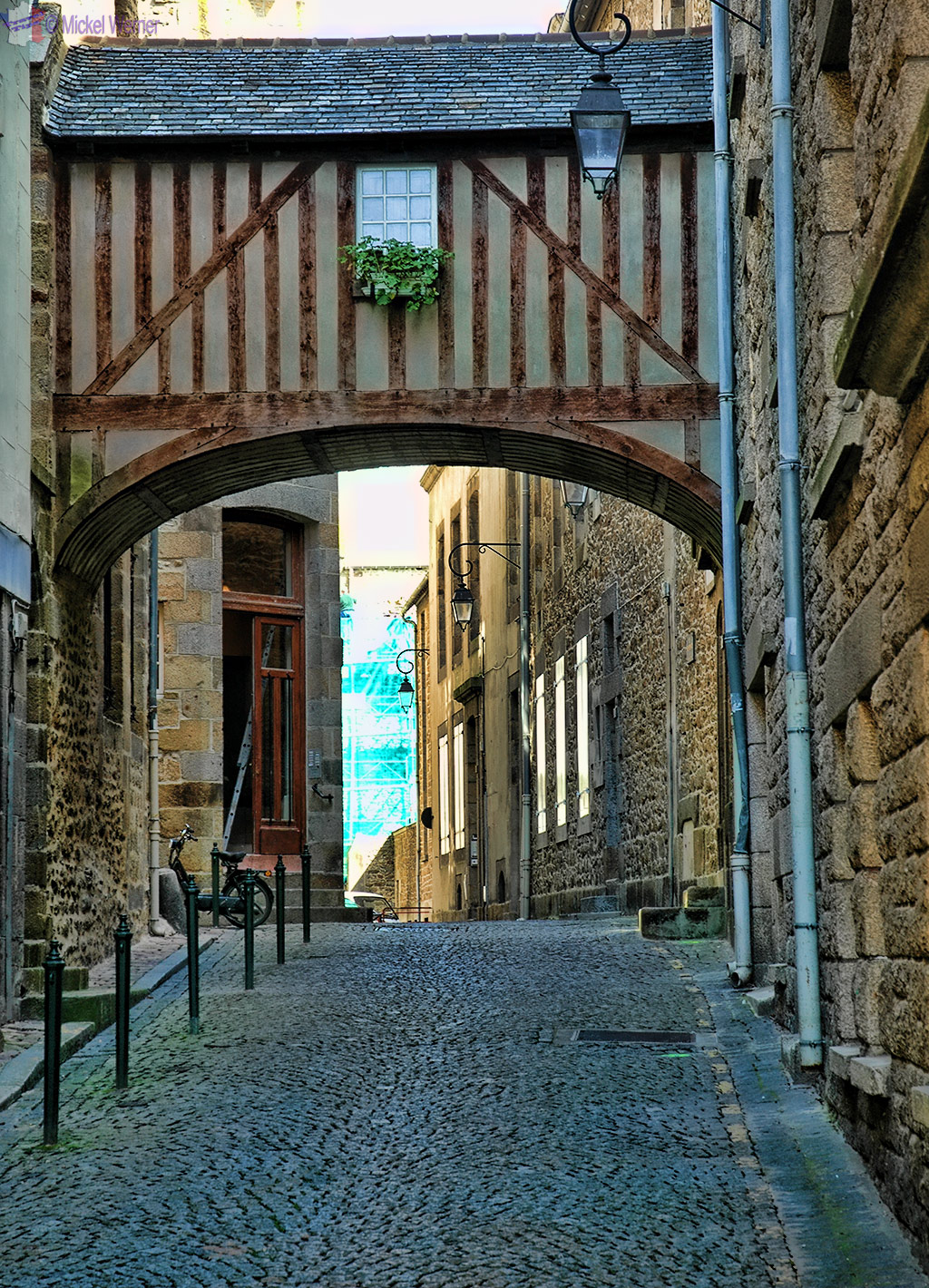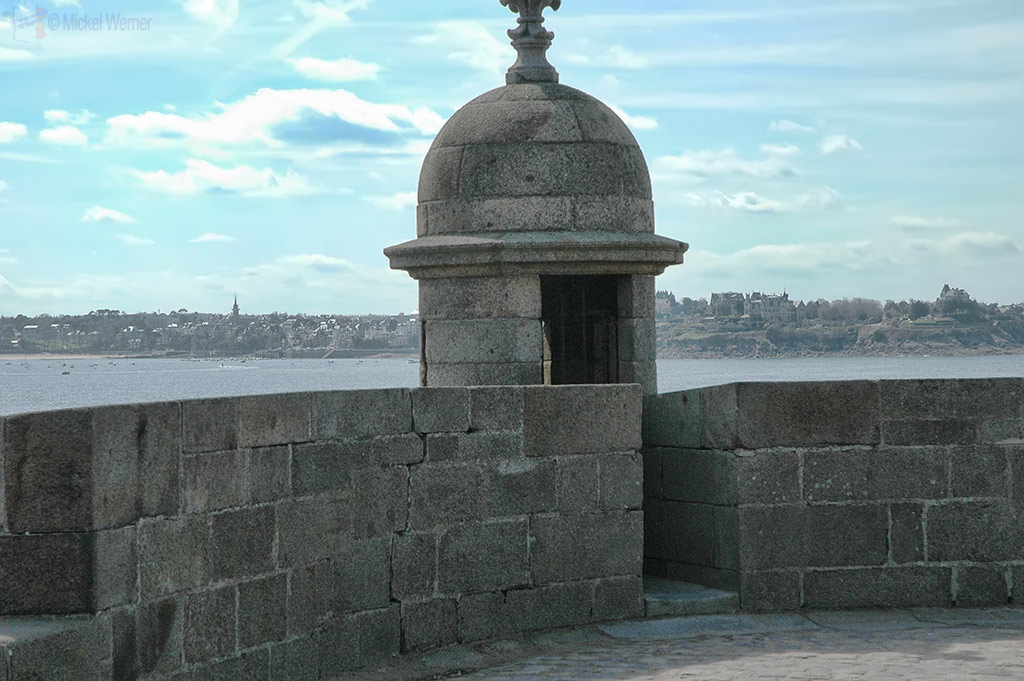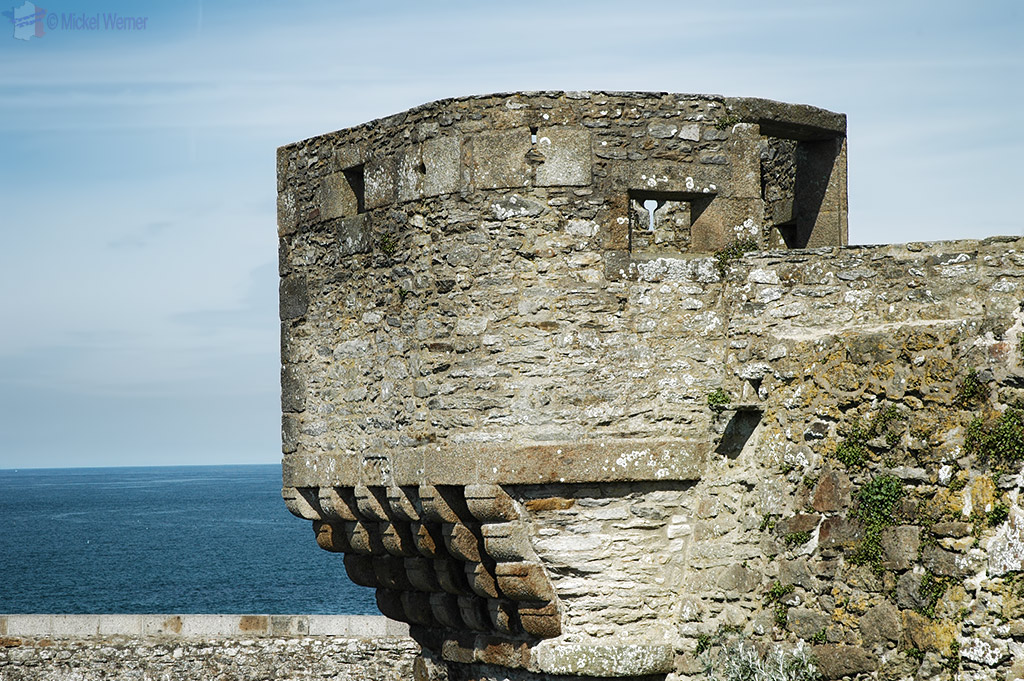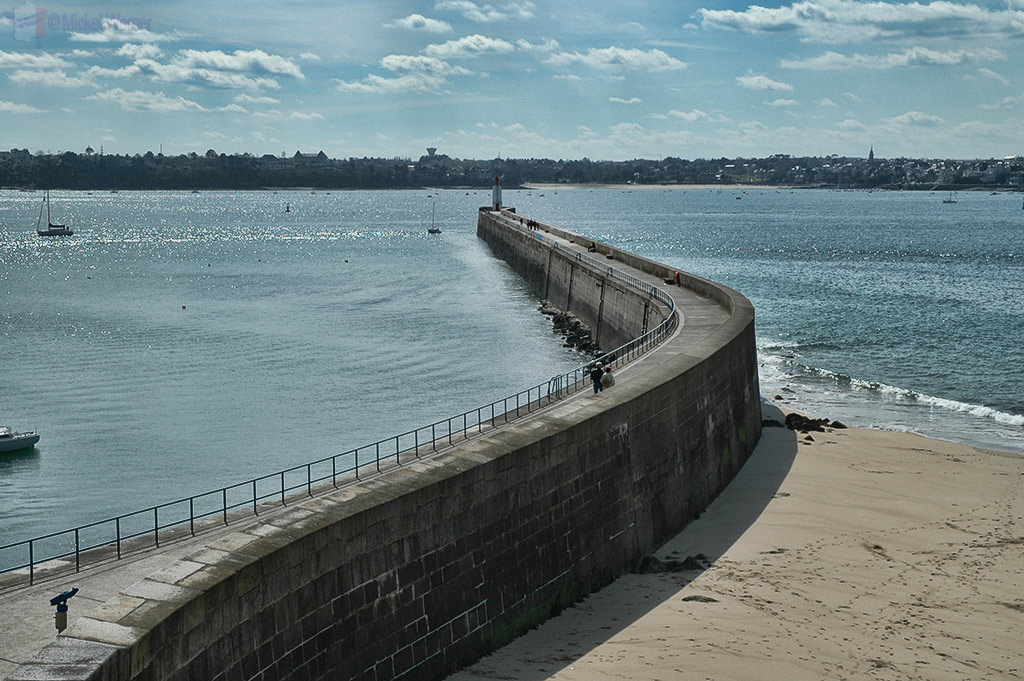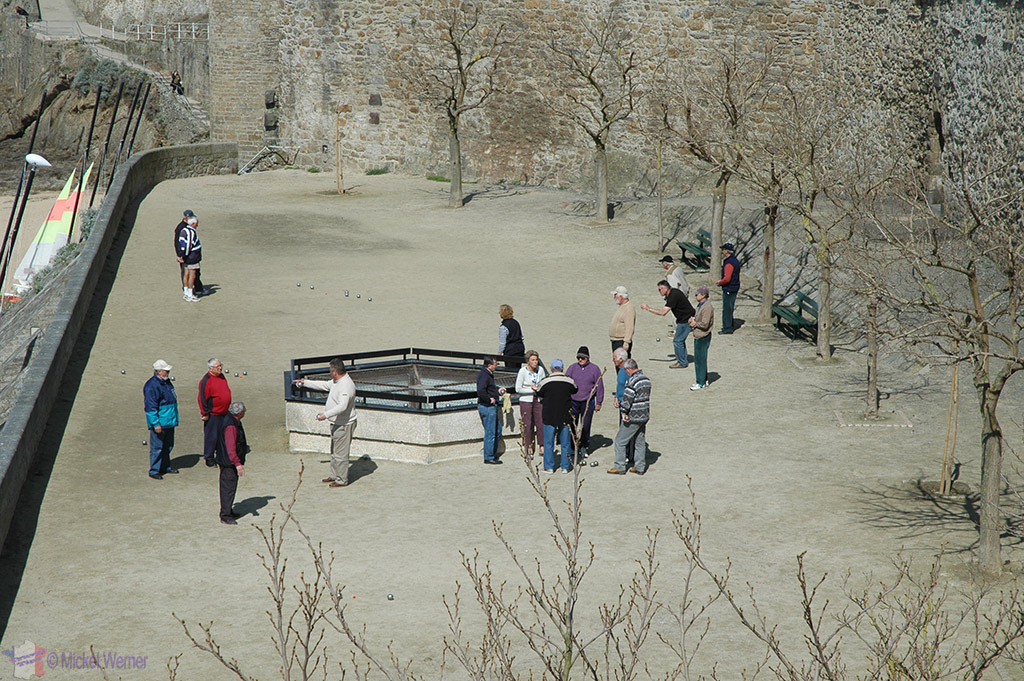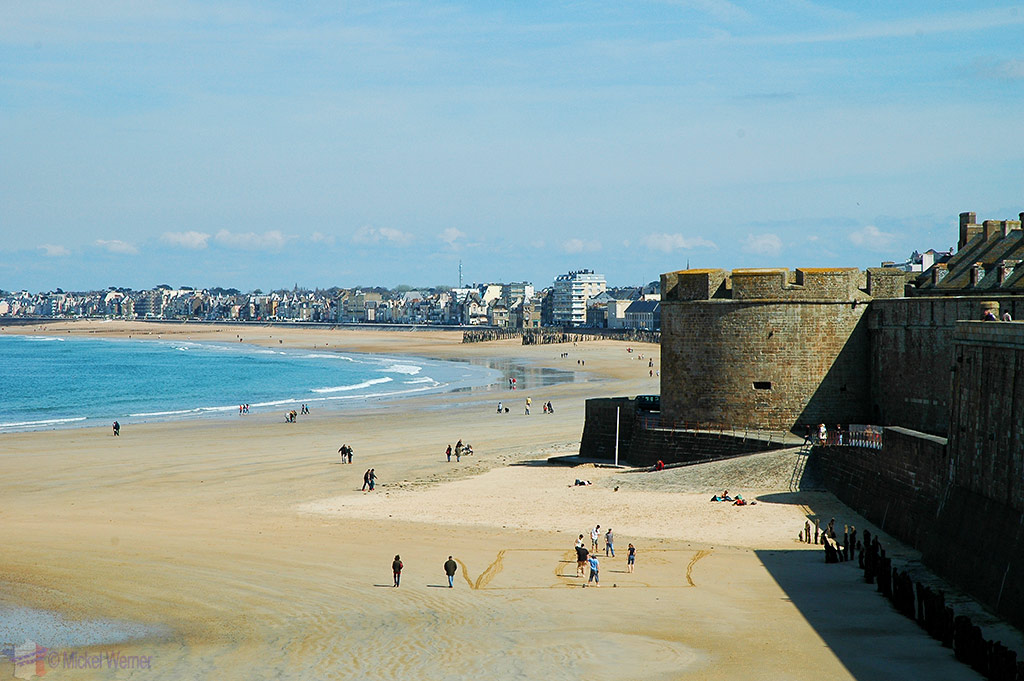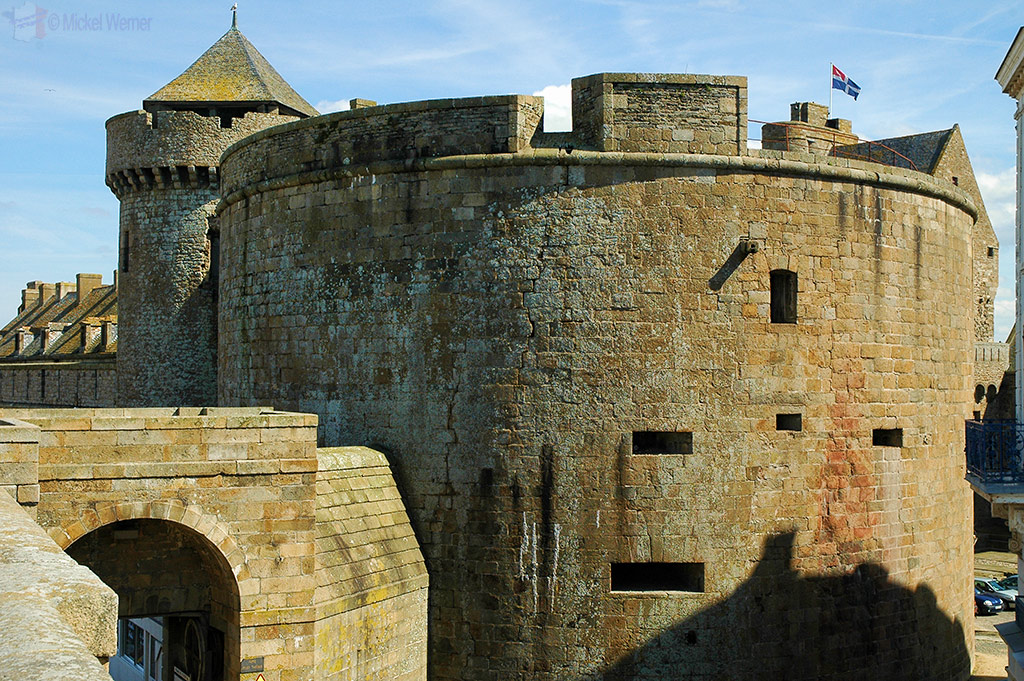St. Malo in Brittany is one of those cities (population around 50,000) that shows very well why France is the #1 tourist destination in the world. It’s a medieval city, well maintained with an enormous walled city, enormous fortress towers, a big harbour, many old and majestic houses and cobblestone streets lined with restaurants. Definitely a great place to visit when you are on the West coast of France. As a bonus, it’s located across the river from another fantastic place; Dinard.
Since there is a big harbour in St. Malo (Afterall, St. Malo was the home of the main French buccaneering force), you can expect that the city is located alongside the sea, and you’ll not be wrong. A newer section on the East side of St. Malo hosts many big old mansions and newer hotels.
There is a long and sandy beach, with its associated promenade leading all the way to the walled city. This section of the city contains many of the upmarket houses and a few luxury hotels and spas.
The fortress is imposing and at first view, enormous. And it is.
The fortress itself, located inside the walls, was built in 1421 by the Dukes of Brittany. The fortified walls construction started earlier in 1155. The fortress was military until 1923 when the city purchased the building and turned it into a museum in 1927. After WWII, it was badly damaged, but restored recently.
Now, apart from housing the history of the city as a museum, there is also a part of the City Hall located inside the fortress.
This is one of the main gates (in total there are 8 gates, while in the 12th century, there were only 2 gates) called “Porte Saint-Vincent”. It was built in 1708.
This is the view of the Saint-Vincent gates from the inside of the city.
But first let’s have a look outside the city walls.
Outside away from the beach, you will see an island containing a fort. This is the Saint-Malo Fort (not to be confused with the Fortress inside the city).
The St. Malo Fort, also called the “Fort National” was built in 1689 to defend the city against the English invaders. The Fort can be accessed during low tide. During WWII it became a German prison. The Fort can be visited, but you’ll need to check the opening times since they change almost every day due to the tides. Click here to access the Fort’s web site (there’s even a web cam at the site).
Inside The Walled City
Walking on the cobblestone streets, you will find many small shops and restaurants, some as old as the city itself.
Saint-Vincent cathedral
The construction of the Saint-Vincent cathedral started in the 12th century and recent renovations were finished in 1972.
Walking through the narrow streets of the walled city, you will find many interesting structures.
Walking The City Walls
You can walk all around St. Malo on top of the very wide fortress walls.
The fortified walls go all around the city, giving you great views both into the city and outside.
From the walls, you can see several of the harbours of St. Malo, including the ferries joining St. Malo with Guernsey, Jersey and the mainland of United Kingdom.
Every corner, every portion of the fortified wall has shooting ports and observation posts.
Lighthouse Phare du Mole
On one side you can clearly see the pier and at its end the lighthouse beaconing the entry into the St. Malo harbour.
The 9.7 meters high lighthouse was built in 1838 but moved to its current position in 1934. The lighthouse was later destroyed by the Germans during WWII, but rebuilt in 1959.
On parts of the wall you can see the sides of the thick fortified wall.
When walking on the fortified wall towards the beach, you can see a natural swimming pool which uses the sea water inside the “pool”. In fact, it’s just the beach and water cordoned off by a concrete wall.
You will see many activities on both sides of the fortified wall. Petanque…
… land sailing….
… and of course fishing.
Further up you’ll see the second fort, Fort du Petit Be, guarding the entry to the St. Malo harbour. Built in the 17th century to protect the city from the English and Dutch.
There used to be 5 of these forts, today only 3 remain standing. Like the other fort, it can only be visited during low tide.
Continuing the walk on the walls…:
At a normal walking pace, it’ll take one full hour walking around the city on top of the walls.
Summary
As you can see, the city and its fortified walls are amazingly well kept. It’s a major structure, and when we say it’s old, we mean it. The first recording of the St. Malo name was in 541 AD. The city of St. Malo hosts 83 historical monuments.Enough to keep you busy for a few days.
Other Articles Related To St. Malo
Related Posts
- 64
 Transport Getting There Ferry: from Newhaven, UK, there are 2-3 daily return sailings. Within Dieppe Dieppe is rather small and mostly flat, so no transportation is needed. If you are in the city centre, you can walk up to the castle. If you have come via ferry, there is a…
Transport Getting There Ferry: from Newhaven, UK, there are 2-3 daily return sailings. Within Dieppe Dieppe is rather small and mostly flat, so no transportation is needed. If you are in the city centre, you can walk up to the castle. If you have come via ferry, there is a…

